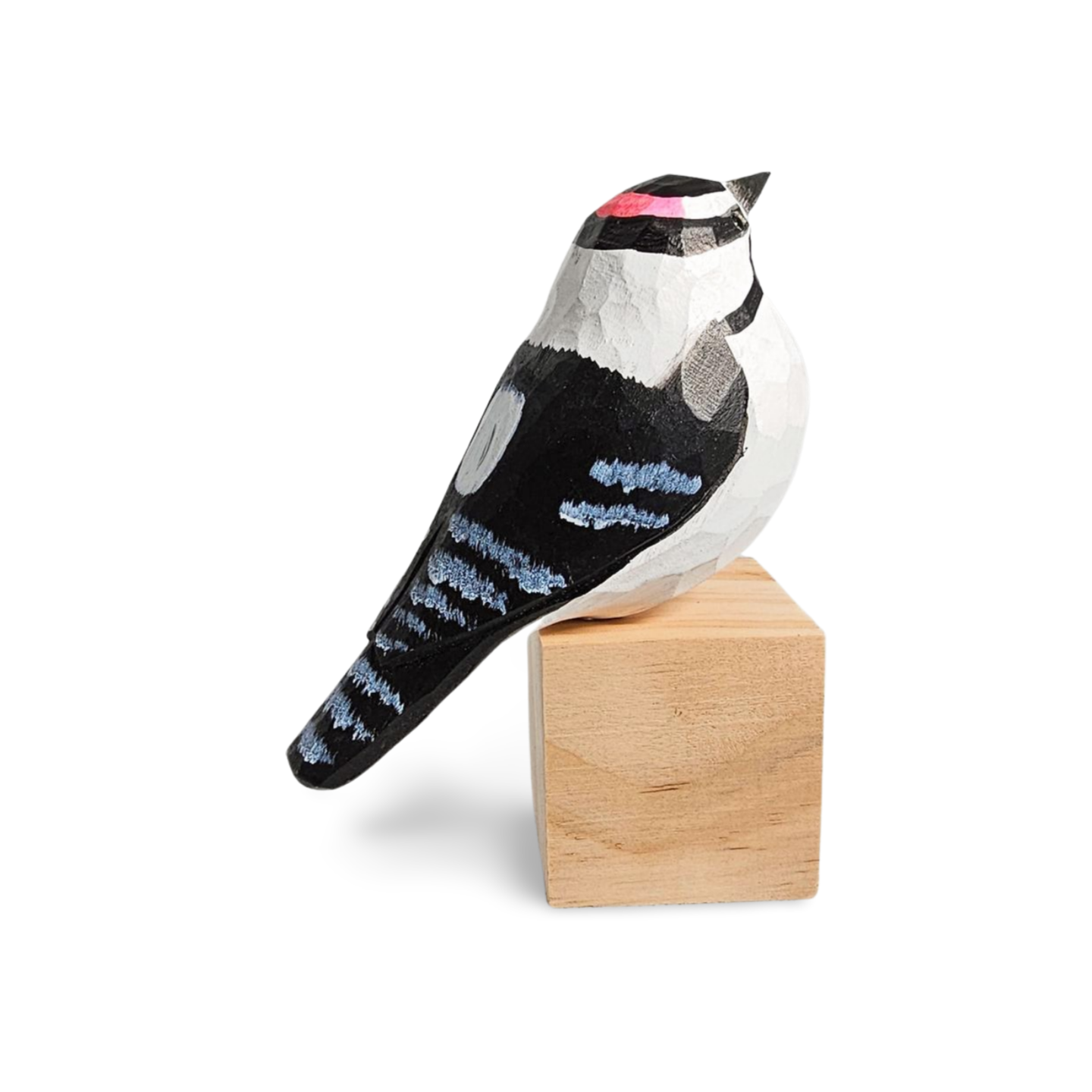
Downy Woodpecker Courtship Strategies: How They Attract a Mate
Share
Downy Woodpecker Courtship Strategies: How They Attract a Mate
 The Downy Woodpecker (Dryobates pubescens) is the smallest woodpecker in North America, yet it has a bold and energetic courtship process. These birds use a combination of drumming, visual displays, aerial chases, and mate-feeding to attract a partner. In this blog, we will explore how Downy Woodpeckers win over their mates and form strong pair bonds.
The Downy Woodpecker (Dryobates pubescens) is the smallest woodpecker in North America, yet it has a bold and energetic courtship process. These birds use a combination of drumming, visual displays, aerial chases, and mate-feeding to attract a partner. In this blog, we will explore how Downy Woodpeckers win over their mates and form strong pair bonds.
1. Drumming: The Rhythmic Love Song 🥁
Instead of singing like songbirds, Downy Woodpeckers use drumming as their main way to attract a mate. Males tap their beaks rapidly against tree trunks, creating a rhythmic sound that carries through the forest.
Why Drumming Is Important in Courtship:
✔ The louder and faster the drumming, the stronger and healthier the male appears.
✔ Drumming helps males mark their territory and warn rivals to stay away.
✔ Females are attracted to males with consistent, energetic drumming patterns.
Tip: If you hear fast, rhythmic tapping in the woods, it might be a male Downy Woodpecker trying to impress a female!
2. Wing-Fluttering & Head Bobbing: Visual Displays 👀
Once a female is nearby, the male performs a series of movements to get her attention.
How Males Use Visual Displays in Courtship:
✔ He fluffs up his black-and-white feathers to appear bigger and more attractive.
✔ He bobs his head and tilts his beak toward the female.
✔ He spreads his wings slightly, fluttering them in small bursts to show excitement.
These movements demonstrate confidence and fitness, making the male a more appealing choice.
3. Aerial Chasing: The Test of Endurance ✈️
After the initial displays, the female tests the male’s persistence by leading him on an aerial chase.
Why Chasing Is Important:
✔ The female wants to see if the male is strong and agile.
✔ A longer, more persistent chase proves the male has stamina and energy.
✔ Only the most determined males will be chosen as mates.
Tip: This behavior ensures that the female selects a partner with the best survival skills for their future offspring.
4. Courtship Feeding: Sharing Food as a Sign of Devotion 🍎
One of the most important courtship behaviors in Downy Woodpeckers is mate-feeding, where the male offers food to the female.
How Mate-Feeding Works:
✔ The male finds high-energy food like insects or larvae.
✔ He gently presents it to the female, showing his ability to provide.
✔ If the female accepts the food, it signals that she is ready to form a bond.
Tip: Males that offer regular, nutritious meals are more likely to be chosen as mates!
5. Nest Site Selection: Preparing for the Future 🏡
Males and females work together to excavate a nest cavity in a dead tree or branch.
How Nesting Factors into Courtship:
✔ Males find and begin excavating potential nest sites.
✔ The female inspects the cavity and decides if it is suitable.
✔ If she approves, the pair takes turns finishing the nest construction.
A well-built nesting site shows the male’s commitment and ability to provide shelter.
6. Long-Term Pair Bonding: Partners for the Breeding Season 💕
Once a female selects a mate, the pair forms a strong seasonal bond.
✔ They stay together for the entire breeding season, cooperating in nest-building, incubating eggs, and feeding chicks.
✔ Males continue feeding the female while she incubates the eggs.
✔ After the chicks hatch, both parents take turns bringing food to the nest.
Tip: This teamwork ensures that the chicks have the best chance of survival.
7. Defending Their Territory: Protecting Their Family 🛡️
During the breeding season, both males and females defend their territory to keep their nest safe.
How They Protect Their Nesting Area:
✔ Drumming loudly to warn away rivals.
✔ Chasing away other woodpeckers or small birds that get too close.
✔ Using threat displays, such as head-tilting and wing-fluttering, to intimidate intruders.
A secure territory helps ensure that their young grow up in a safe environment.
Conclusion
The Downy Woodpecker may be small, but it has an impressive and highly active courtship process. Males must drum loudly, perform visual displays, chase females, offer food, and build a strong nest to secure a mate. Once paired, these birds work together to raise their young and defend their nesting area.
If you’re near a forest in early spring, listen for the fast drumming sounds of a Downy Woodpecker—it might be a male trying to win over his perfect mate!







